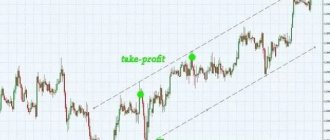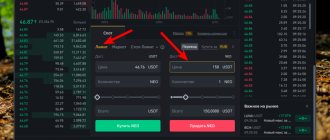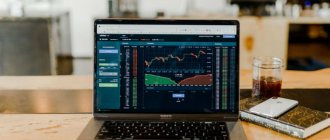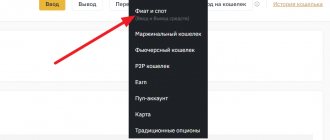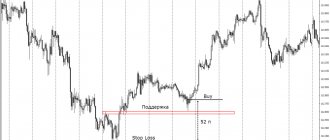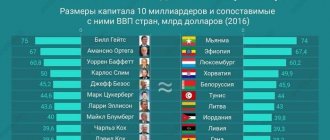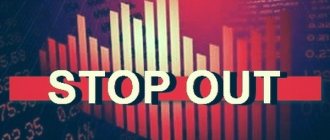Hello dear readers and blog guests! Since financial trading seems like an insurmountable barrier for many “dummies,” I suggest starting with the basics and expanding your knowledge of trading.
After all, everything is not so complicated, if not simple, and all exchange gurus began their journey by studying the elementary: what are stop loss and take profit?
The basis for concluding transactions on any exchange is the opening and closing of an agreement; all trading movements in the terminal are based on this.
To do this, the trader gives an order to the exchange intermediary to open a transaction in the form of a completed document (order), where he can open a long or short position.
Next, the order accepted by the broker is processed, and your asset enters the market according to the parameters you specified. In addition, the dealer terminal provides the ability to manage and check the status of your transactions.
A market order is usually called an order from a dealer company to purchase or sell a financial asset according to the market rate.
Types of orders
All exchange orders are divided into 2 large groups:
- market - executed instantly;
- deferred - trigger when the price reaches a set level.
Market orders include the following orders to a broker:
- Buy — purchase of the selected asset on the market;
- Sell - selling an asset on the market.
The order is executed at the best price available in the order book.
Several types of pending orders are used in trading:
- limit order - purchase or sale of an instrument when the price reaches a set level;
- stop order - an order that is placed to limit losses or fix profits.
Types of stop orders:
- market stop order - when the set price is reached, a Buy or Sell market order is automatically sent to the exchange;
- limit order (take profit and stop limit on the exchange) - when the set price is reached, a limit order to buy or sell is sent to the market;
- Trailing Take Profit - trailing stop for taking profit.
Stoploss orders can be used not only to close an existing position, but also to enter a trade.
What will happen at the webinar
- What is more important: Stop Loss or Take Profit
- The whole truth about the law of meanness in trading
- Methods for placing stop losses
- Methods for placing take profits
- Practical secrets that are not talked about
- Mental skills for dealing with trading restrictions
- Answers to your questions
Stop Loss: what is it and what is it for and how to correctly calculate the SL value
Literally translated from English, Stop Loss means “stop losses.” Before setting a stop loss, the trader calculates the maximum possible loss on the transaction and limits it using a special order to the broker. Such actions are recommended for short-term trading, intraday trading and operations with leverage. Aggressive trading without stop orders leads to increased losses and, as a consequence, to loss of deposit.
Each trader independently determines the size of the order to limit losses in accordance with his risk management system. Most experts recommend setting the risk level at 2-3% of trading capital.
Example: a trader’s deposit is 500 thousand rubles. Before setting a stop loss, the maximum loss per trade is calculated. In this case, with a risk of 2%, it is 10 thousand rubles.
If the price of one point with the selected transaction volume is 500 rubles, the trader must place an order 20 points below or above the position entry level (10000: 500 = 20).
If the stop loss size does not correspond to the trading system, you need to change the lot volume. For example, if a trader’s strategy requires setting an order 40 points below or above the entry price, the lot should be reduced by 2 times.
Calculating stop loss
So, we are faced with the task of deriving a formula for calculating the size of stop loss. It is very important that this formula is sufficiently universal and can determine how much our shares in the investor’s portfolio can fall, based on his personal characteristics.
Theory
Given:
- price —the purchase price of one share;
- lot - the number of shares in one lot (since in our example the work is on the American market, then 1 lot is equal to 1 share);
- position - the number of purchased lots;
- capital - the amount of the investor's total capital;
- risk - the amount of risk for the total capital.
For example, let's take a share of the Facebook , its price is $118.18 per share in the amount of 10 lots . Based on the standard theory, we assume that the cost of a position is price* position*lot . From here we get that the position we opened has the following value: price* position = 118.18*10= $1181.8 .
Now I propose to make the assumption that investor capital is equal to $5,000 . In this case, the size of the maximum permissible risks - risk is equal to 10% or 0.1 . Here it is worth paying attention to the fact that the solution to this problem involves a proportional division of the amount of risks across several positions . That is, if our imaginary investor invests all his capital in one single position, then it is obvious that he bears the maximum risks - his capital can decrease by as much as 10%. If an investor decides to split his capital and invest it in 2 different positions, thereby diversifying his risks, then each position will not lose more than 5% in value. Well, if both one and the other stock fall in price, then the total amount of losses will not exceed 10% of the initial cost of capital.
Thus, we will calculate the amount of risk for one position using the following formula:
Position Risk (%) = Risk* Position Value/Capital
Based on our example, it turns out that the position risk is – 10*1181.8/5000= 2.36% . From here we get that if a position is equal to a tenth of the total capital, then the risk on this position will be equal to a tenth of the total risk . I would like to draw your attention to the fact that according to the presented formula, the risk of a position is expressed as a percentage . In order to convert this value into dollar equivalent, simply multiply it with the position value:
Position Risk ($) = Position Value* Position Risk (%)
or 1181.8*0.0236= 27,89$.
After this, all we have to do is calculate to what level the price of one share must fall in order to reach the level of the maximum allowable reduction in the value of the position for this security:
Risk level of one stock = Position risk ($)/lot*position
27.89/10= 2.789 $
Now we simplify all the above calculations and get one and only Stop Loss formula :
Stop loss = Price^2*Risk*lot*position/Capital
We've sorted out the theory. Now, traditionally, the time has come to practice knowledge.
Practice
Let's assume that on November 20, the investor noticed a price rebound from the established support level of 115.14 (5-month low). Based on this, he concludes that in the near future the price will begin to rise and move towards the resistance level of 122.15 . With $5,000 at his disposal, he decides to buy 10 lots at $118.18 each .
Question : in what area should the stop loss be set, given that the capital risk is 10%?
Stop Loss = 118.18^2*0.1*1*10/5000 = 2,79
That is, the calculated stop loss level is $2.79. Based on this, we fix the loss level at 115.39 . Despite the fact that the problem calculates the stop loss of a long position, this formula can safely be used to calculate shorts.
Order for setting profit and its possibilities
What take profit is is best explained by its name. This order is set at the level where the trader wants to exit the market and take profit in case of successful developments.
This term is translated from English: “taking profit.” Execution of the order leads to the closure of the transaction and exit from the market. Such orders are most often placed in mechanical and semi-mechanical trading systems.
Trailing stop in Kwik
The Quick trading terminal has the function of setting orders such as Trailing Take Profit and Trailing Stop Loss. In this case, the order automatically moves following the price in the user-specified range.
For example, a share was purchased at 120 rubles, and the order was set at 0.5 rubles. below. If the deal goes positive and the asset grows to 125 rubles, the application will be at the level of 124.5 rubles. If quotes fall by 0.5 rubles, the stop order will be executed. The profit will be 124.5 - 120 = 4.5 rubles. per share.
Trailing orders are especially effective when there is increased volatility, rapid growth or decline in the market. In such conditions, manually moving take profit and stop limit is quite difficult.
With the help of an order to the broker Trailing Take Profit, a trader can fix risks, moving after the trend. If the market pulls back sharply, the order will automatically work, preventing profits from melting away.
But the MetaTrader 4 terminal also has orders called trailing stop, which work on the same principle. Moreover, it can be implemented in the terminal itself or using a Forex advisor, here is an example:
Correct calculation
The trader determines the calculation of the size of the order to take profit independently, depending on his trading strategy.
Experts recommend setting the take profit to stop loss ratio in mechanical trading systems at 1:3 or 1:4, i.e. the expected profit from a transaction should be 3-4 times greater than the possible loss.
When trading discretely, they most often focus on technical analysis (or even graphical analysis), for example, they place an order behind important levels, minimums and maximums of the price.
An example of one such strategy is Flag + ABC:
Minuses:
Stops and profits are usually set by traders at certain levels , which is well known to market makers (organizers of exchanges, large investors, brokerage houses, etc.), whose goal is to knock out a huge mass of amateurs from the market and take away their deposits using completely honest methods. Profits set in advance deprive the trader of flexibility if the situation forces him to make a non-standard decision. One of the rules in the market requires allowing profits to grow. And profit limits . An alternative in this case would be a thorough capital growth plan. If you want to enter the market, but lack confidence, then it is better to reduce the volume of the transaction for the sake of peace of mind. As a result, either you will avoid a significant drawdown and receive a smaller amount of profit, or you will incur less significant losses.
Benefits of using TP and SL
The advantages of using stop orders on the stock exchange include the following factors:
- clear control of possible losses and potential profits per transaction;
- eliminating the human factor in trading;
- automatic closing of a transaction if it is impossible to monitor the market online;
- wide possibilities for using TP and SL when designing trading robots;
- compliance with risk management in case of technical malfunctions (trading terminal freezing, stock exchange failures, problems with Internet connection);
- increasing systematic trading;
- possibility of use on the Binary Options market, Forex, exchanges, and non-exchange markets.
But trading using stop orders also has disadvantages:
- Market makers or unscrupulous brokerage firms know where the concentrations of loss-limiting orders are located and specifically “hunt” for them. They can provoke a breakout of important levels in order to knock as many players out of the market as possible and take their money.
- When placing a market stop order, losses may occur due to slippage. The higher the market volatility, the greater the trader's losses will be.
- If you place a limit stop order, there is no guarantee that it will work. This probability increases with a sharp rise or fall in the market.
Some tips for installing stop loss
In the slang of stockbrokers there is a very interesting expression “ to take to the feet .” It means a deliberate increase or decrease in price to places where the largest number of protective stop losses are accumulated. After the orders are executed (thus knocking out most of the traders from the market), prices return to their original positions. Only understanding in which zone the majority of the stop loss is located allows the trader to avoid such unpleasant situations.
When are feet not needed?
- The favorite place for stop loss accumulation is the resistance and support levels known to you and me. This is due to the fact that when looking at the chart, most traders have an intuitive desire to mark the option boundary precisely at the level of the previous maximum and minimum values. However, remember that exactly the same desire also arises among other traders who are in the market at this very moment:
Please note: the longer the timeframe, the more significant the level will be . At the same time, the more powerful the level, the greater the number of stop loss orders will be collected there, and therefore the risks of placing the next protective order in this zone will be higher;- It is not advisable to place stop loss next to round numbers . Amazingly, it is these numbers that in some mysterious way attract most of the protective orders;
- Long-term moving averages are extremely popular among large traders , which in no way can be ignored by small market players. It is in these areas that they try to place their stop orders, making these areas unsafe.
Methods for setting stop loss
Let's look at examples of how stop loss works and how to set it.
At a local minimum when opening a long position
In accordance with the postulate of technical analysis, the probability of a continuation of an uptrend is higher than a market reversal. In such a situation, the trader’s task is to open a position near the local minimum in anticipation of further growth. It is recommended to wait for the formation of a reversal figure and buy an asset on the market. Stop Loss is placed several points below the local extreme. The exact calculation is made depending on market volatility.
Example - Forex strategy using 4 indicators
At the resistance level when opening a sell trade
Another classic method of placing a stop loss order is at a resistance or support level. This can be either a trend line or a horizontal line. Before setting a stop loss and take profit when opening a short position, you should wait until the price reaches the resistance level and begins to reverse.
Example - 10 pips EURUSD strategy ⇒
A stop order is placed several points above the signal line or local maximum. If a trend line is used, Stop Loss can be moved along it, for example, with each new candle.
On the parabolic marker when opening a buy deal
Parabolic SAR is great for trading in a trending market. The indicator marker is plotted on the chart above or below the price, depending on the direction of the trend. It’s easy to figure out how to correctly set a stop loss when opening a buy trade. The order is placed on the parabolic marker or several points below it. With the formation of each new candle, the order is moved following the indicator.
An example of strategies is here >>
And here is one of them:
Where are protective orders displayed?
Firstly, on the chart itself.
Secondly, in the “Terminal”.
If the terminal is not displayed for you, press the Ctrl + T buttons (in the English layout). It’s easy to remember: T – terminal.
This is done exactly in MetaTrader, as in other terminals - unfortunately, I don’t know, I haven’t come across it.
Methods for setting profit
It is recommended to place a take profit request in cases where the trader is not constantly at the terminal.
At the support level
An order to take profit is placed at a support or resistance level in the same way as a Stop Loss is placed. Depending on the situation, a trend or horizontal line is used. The difference is that it is better to set Take Profit several points in front of the level, while the order to limit losses is fixed behind the line. This way the deal will be closed even if the price falls slightly short of the target values.
Example - Forex Strategy Daily Breakout System >>
Fixed - 2-3 or more times the stop loss
Experts recommend setting the take profit so that its size is 2-4 times larger than the stop loss. In this case, the trading system will be profitable, even if most transactions are closed at a loss.
This approach can be combined with the technique of placing orders described in the previous paragraph. If a strong support or resistance level for profit taking is too close to the market entry point, you may want to hold off on the trade and wait for a more appropriate opportunity.
Example - Forex Strategy “Yumi” >>
Strategies with mandatory profit setting
It is recommended to place an order to take profit in the following cases:
- automatic trading using robots (Forex advisors);
- in mechanical trading systems when trading manually;
- when a trader cannot constantly monitor the market online and take profits with his hands;
- placing a pending paired order SL and TP when trading on news;
- The Trailing Take Profit order (trailing stop) can be used effectively in case of a strong upward or downward trend.
An example of placing orders in a strategy for trading on news:
By dragging the price
If you opened a trade but did not set a Stop Loss, set it as follows. Click on the price line with the left mouse button and drag it down.
It's very fast and convenient. There is no need to calculate anything or enter any numbers. But, I warn you, on small timeframes you may not have time to place a Stop Loss in this way.
By changing the order
Double-click on the price line. An order window will open. Enter the desired Stop value there and click “Change”.
When you specify a new value, the “Edit” button will become clickable, you can click on it and your changes will be made.
Main mistakes when setting stop and profit and how to avoid them
The most common mistakes when placing stop orders:
- The trader does not observe financial discipline and does not set a stop loss. This is the most serious mistake that leads to loss of trading capital. The reason most often lies in psychology. Most players tend to quickly take profits and, conversely, hesitate to take losses. As long as the deal is open, there is always hope for the best. Such actions end with the broker’s forced closure of positions and the complete destruction of the trading account.
- Incorrect calculation of the stop loss size. It is necessary to strictly adhere to your money management system and ensure that the possible loss does not exceed the maximum permissible level. The recommended risk per transaction is no more than 3%.
- The stop order is placed too close to the market entry level. In this case, there is a high probability that the order will be triggered at the slightest outbreak of volatility.
To make it easier to calculate your stop loss, I recommend using a money management calculator:
Download – Money Management Calculator (calc.ex4 indicator for the MT4 trading terminal)
Trading in financial markets is an activity with a high level of risk. If a trader is unable to stick to his money management system when trading manually, it may be worth starting to use mechanical systems and trading robots. Some brokers offer their services to limit risks by setting limits on trading operations, but the final word always remains with the client.
conclusions
In general, summing up all of the above, I want to once again tell you, dear friends, that no one except you yourself will insure your trading capital against losses . Do not neglect the importance of stop losses, be careful and reasonable . Huge profits to you, and see you soon! If you liked the article, share it on a social network and subscribe to the latest articles on my blog.
If you find an error in the text, please select a piece of text and press Ctrl+Enter. Thanks for helping my blog get better!
